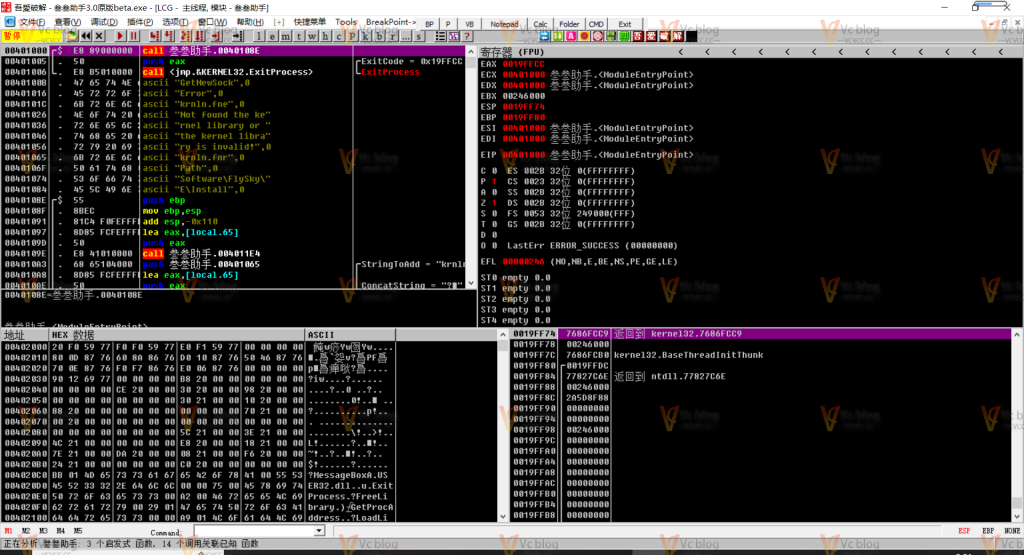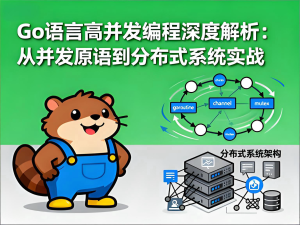摘要:
在Go语言并发编程中,Context不仅是控制并发的关键,更是理解Go哲学的重要窗口。本文将带你深入Context的设计思想,从源码层理解其实现机制,并通过真实业务场景展示如何正确使用Context进行超时控制、取消传播和元数据传递。无论你是Go新手还是资深开发者,这篇文章都将改变你对并发控制的认知。
一、 Context的本质:不只是取消信号
很多开发者对Context的认知停留在表面,认为它只是传递取消信号的工具。但实际上,Context是Go并发模型的核心抽象。
传统并发控制的困境:
func processData(data []byte) error {
done := make(chan bool)
go func() {
// 长时间处理
time.Sleep(10 * time.Second)
done <- true
}()
select {
case <-done:
return nil
case <-time.After(5 * time.Second):
return errors.New("timeout")
}
}这种模式的问题:
- 资源泄露:超时后goroutine无法被回收
- 复杂的传播机制:多个goroutine间难以同步取消信号
- 缺乏统一标准:每个项目都有自己的实现方式
Context的出现正是为了解决这些问题。
二、 源码层解析:Context接口的设计哲学
让我们深入context包,理解其核心设计:
// context/context.go
type Context interface {
Deadline() (deadline time.Time, ok bool)
Done() <-chan struct{}
Err() error
Value(key interface{}) interface{}
}四个方法的深层含义:
- Deadline() – 不是简单的超时时间,而是”最晚执行期限”
- Done() – 不是普通的channel,而是”生命周期终止信号”
- Err() – 不是简单的错误,而是”终止原因的状态机”
- Value() – 不是普通Map,而是”树形作用域的数据存储”
核心实现结构分析:
// cancelCtx - 可取消的Context实现
type cancelCtx struct {
Context
mu sync.Mutex
done chan struct{}
children map[canceler]struct{}
err error
}
// timerCtx - 带超时的Context实现
type timerCtx struct {
cancelCtx
timer *time.Timer
deadline time.Time
}
// valueCtx - 带值的Context实现
type valueCtx struct {
Context
key, val interface{}
}关键设计模式:
- 装饰器模式:通过嵌套组合扩展功能
- 观察者模式:子Context监听父Context的取消信号
- 不可变性:Context创建后不可修改,确保线程安全
三、 实战场景:从基础到高级的Context使用
场景1:数据库查询的超时控制
func GetUserWithTimeout(ctx context.Context, userID int) (*User, error) {
// 设置数据库查询的超时上下文
ctx, cancel := context.WithTimeout(ctx, 3*time.Second)
defer cancel()
var user User
err := db.QueryRowContext(ctx,
"SELECT id, name, email FROM users WHERE id = ?", userID).
Scan(&user.ID, &user.Name, &user.Email)
if err != nil {
if errors.Is(ctx.Err(), context.DeadlineExceeded) {
log.Printf("数据库查询超时,userID: %d", userID)
return nil, fmt.Errorf("查询超时")
}
return nil, fmt.Errorf("数据库错误: %w", err)
}
return &user, nil
}场景2:级联取消的微服务调用
func ProcessOrder(ctx context.Context, orderID int) error {
// 创建订单处理的超时上下文
ctx, cancel := context.WithTimeout(ctx, 30*time.Second)
defer cancel()
// 使用WaitGroup管理多个goroutine
var wg sync.WaitGroup
errCh := make(chan error, 3)
// 并发调用多个微服务
wg.Add(1)
go func() {
defer wg.Done()
if err := validateInventory(ctx, orderID); err != nil {
errCh <- fmt.Errorf("库存验证失败: %w", err)
}
}()
wg.Add(1)
go func() {
defer wg.Done()
if err := processPayment(ctx, orderID); err != nil {
errCh <- fmt.Errorf("支付处理失败: %w", err)
}
}()
wg.Add(1)
go func() {
defer wg.Done()
if err := updateShipping(ctx, orderID); err != nil {
errCh <- fmt.Errorf("物流更新失败: %w", err)
}
}()
// 等待所有任务完成或出错
go func() {
wg.Wait()
close(errCh)
}()
// 收集错误
for err := range errCh {
if err != nil {
cancel() // 任何一个失败就取消所有任务
return err
}
}
return nil
}场景3:请求链路的元数据传递
type contextKey string
const (
requestIDKey contextKey = "requestID"
userIDKey contextKey = "userID"
)
// 中间件:注入请求ID和用户信息
func AuthMiddleware(next http.Handler) http.Handler {
return http.HandlerFunc(func(w http.ResponseWriter, r *http.Request) {
ctx := r.Context()
// 生成请求ID
requestID := generateRequestID()
ctx = context.WithValue(ctx, requestIDKey, requestID)
// 从JWT Token解析用户ID
if userID, err := extractUserID(r); err == nil {
ctx = context.WithValue(ctx, userIDKey, userID)
}
next.ServeHTTP(w, r.WithContext(ctx))
})
}
// 业务层使用Context中的值
func businessLogic(ctx context.Context, data interface{}) error {
requestID, ok := ctx.Value(requestIDKey).(string)
if !ok {
return errors.New("缺少requestID")
}
userID, ok := ctx.Value(userIDKey).(int)
if !ok {
return errors.New("未认证用户")
}
log.Printf("[%s] 用户%d处理数据", requestID, userID)
return processData(ctx, userID, data)
}四、 高级技巧:自定义Context实现
当标准Context无法满足需求时,可以自定义实现:
// TraceContext - 带分布式追踪的Context
type TraceContext struct {
context.Context
traceID string
spanID string
attributes map[string]string
}
func (tc *TraceContext) Value(key interface{}) interface{} {
if strKey, ok := key.(string); ok {
if strKey == "traceID" {
return tc.traceID
}
if strKey == "spanID" {
return tc.spanID
}
if val, exists := tc.attributes[strKey]; exists {
return val
}
}
return tc.Context.Value(key)
}
// 创建追踪上下文
func WithTrace(ctx context.Context, traceID, spanID string) context.Context {
return &TraceContext{
Context: ctx,
traceID: traceID,
spanID: spanID,
attributes: make(map[string]string),
}
}五、 性能优化:Context使用的最佳实践
1. 避免Context的误用
错误用法:
// ❌ 将Context存储在结构体中
type Service struct {
ctx context.Context // 错误的做法!
}
// ❌ 使用默认Background
func process() {
ctx := context.Background() // 应该从调用者传递
// ...
}正确用法:
// ✅ Context应该作为第一个参数传递
type Service struct {
// 不存储Context
}
func (s *Service) Process(ctx context.Context, data interface{}) error {
// Context从调用链传递
return s.processData(ctx, data)
}2. 优化Value查找性能
// 使用自定义类型避免字符串冲突
type contextKey struct {
name string
}
var (
requestIDKey = &contextKey{"requestID"}
userIDKey = &contextKey{"userID"}
)
// 使用类型断言优化性能
func GetRequestID(ctx context.Context) (string, bool) {
if val := ctx.Value(requestIDKey); val != nil {
if id, ok := val.(string); ok {
return id, true
}
}
return "", false
}3. 资源清理的最佳实践
func processWithResources(ctx context.Context) error {
// 创建子Context
ctx, cancel := context.WithCancel(ctx)
defer cancel() // 确保资源释放
// 获取需要手动关闭的资源
conn, err := acquireConnection(ctx)
if err != nil {
return err
}
defer conn.Close() // 确保连接关闭
// 使用goroutine处理
resultCh := make(chan result, 1)
go func() {
resultCh <- doWork(ctx, conn)
}()
select {
case res := <-resultCh:
return res.err
case <-ctx.Done():
// Context被取消,等待goroutine退出
<-resultCh
return ctx.Err()
}
}六、 测试策略:Context的单元测试
func TestProcessWithTimeout(t *testing.T) {
tests := []struct {
name string
timeout time.Duration
workTime time.Duration
expectError bool
}{
{
name: "正常完成",
timeout: time.Second,
workTime: 100 * time.Millisecond,
expectError: false,
},
{
name: "超时失败",
timeout: 100 * time.Millisecond,
workTime: time.Second,
expectError: true,
},
}
for _, tt := range tests {
t.Run(tt.name, func(t *testing.T) {
ctx, cancel := context.WithTimeout(context.Background(), tt.timeout)
defer cancel()
err := slowOperation(ctx, tt.workTime)
if tt.expectError {
if err == nil {
t.Error("期望出错,但得到nil")
}
if !errors.Is(err, context.DeadlineExceeded) {
t.Errorf("期望DeadlineExceeded错误,得到: %v", err)
}
} else {
if err != nil {
t.Errorf("不期望错误,得到: %v", err)
}
}
})
}
}
func slowOperation(ctx context.Context, duration time.Duration) error {
select {
case <-time.After(duration):
return nil
case <-ctx.Done():
return ctx.Err()
}
}七、 总结:Context的哲学思考
Context不仅仅是技术实现,更体现了Go语言的设计哲学:
- 显式优于隐式:通过参数传递,明确依赖关系
- 组合优于继承:通过嵌套实现功能扩展
- 并发安全:不可变性确保线程安全
- 明确生命周期:统一的资源管理范式
掌握Context,意味着你能够:
- 构建可预测的并发系统
- 实现精准的资源生命周期管理
- 设计清晰的API边界
- 编写可测试的并发代码
在微服务和云原生时代,Context已经成为Go开发者必须精通的核心概念。从今天开始,用Context思维重构你的并发代码,构建更加健壮和可维护的系统。
© 版权声明
THE END














暂无评论内容